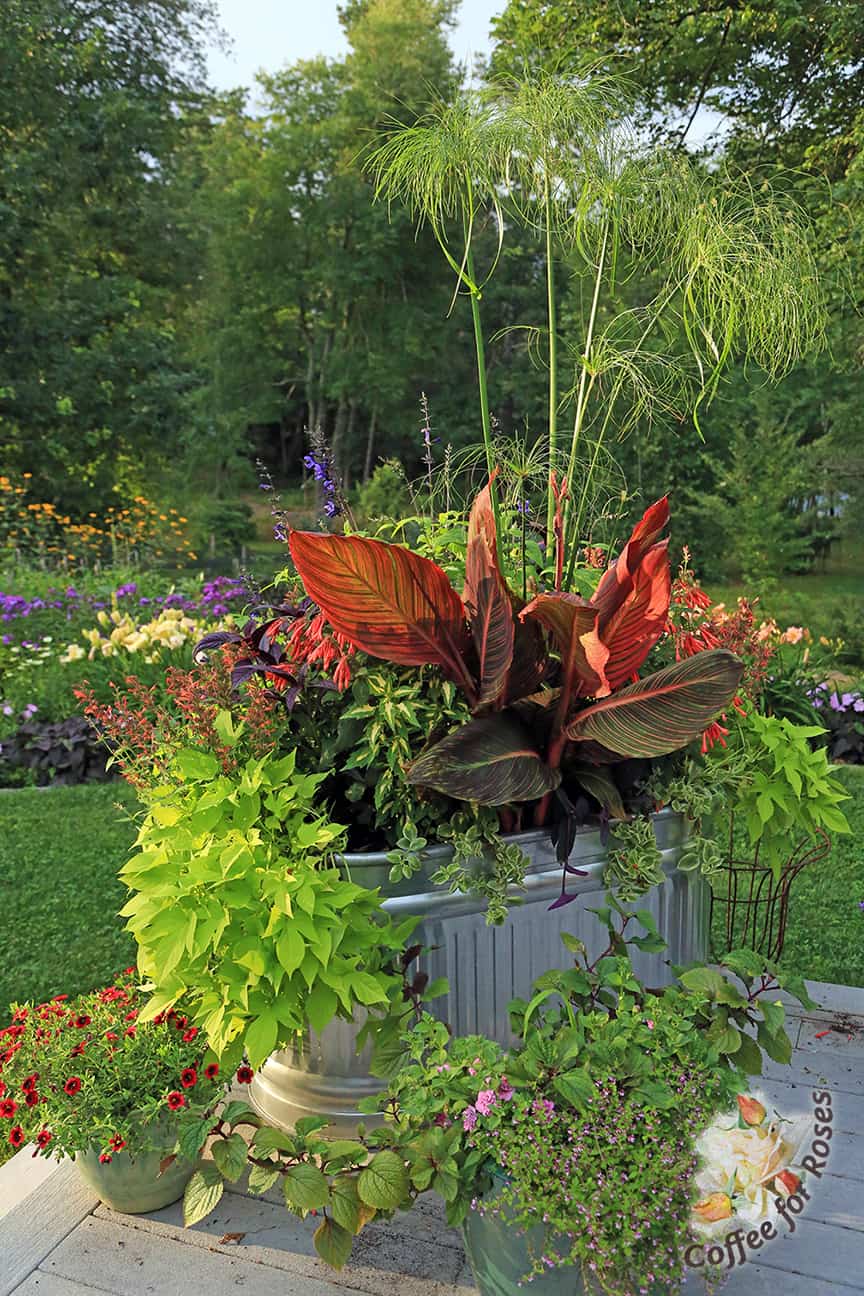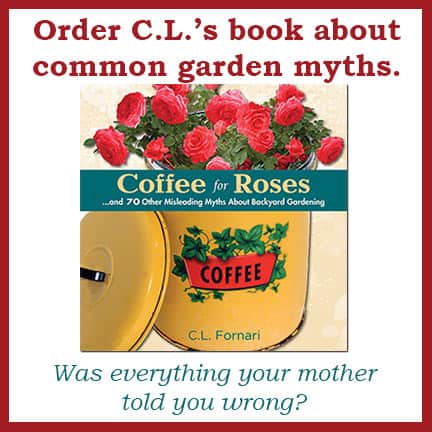In the winter I start planning what will go into my flowerbeds and containers in the coming growing season. On this list are the names of new introductions and plants that have been around quite awhile but are new to my heart because I’m always excited about trying something different. There are other plants, however, that I’ve used before and they remain on my must-grow list. Over the next few weeks I’ll feature many of these plants and today I’m starting with one of the tallest annuals I grow, King Tut Papyrus.
Cyperus papyrus King Tut looks like a grass but it’s really a rush or sedge. In places where the winter temperatures don’t go below freezing this plant is a perennial, but in the northeast where I live we grow it as an annual. People often associate this rush with wet areas, and it can indeed grow on the edges of a water garden. But I have planted King Tut papyrus in the ground in gardens that got my usual once-a-week-to-every-ten-days-soakings and it did just fine…it grew just a bit smaller, perhaps, but it was still almost 5 feet tall, so no complaints from me or the plant.
If you have very large containers King Tut is a must for the center of a mixed arrangement. It provides great height but isn’t heavy or domineering as some larger growing plants would be. (Believe it or not, King Tut is actually a dwarf variety of Cyperus papyrus, which grows to 15 feet in its native habitat.) Since the flowers are on long, hair-like strands that form round, fine heads, the plant has a whimsical but modern appearance that blends in with just about any other annual flower and foliage.
I frequently over-winter my large pots of King Tut in my attached but unheated garage where the temperatures don’t go much below 38 in the winter time. I can’t say that the plant is thrilled about this location, but it lives and springs back to good growth once it’s given warm temperatures and fertilizer again in May.
Here’s a couple of other things you should know about King Tut. First, the smaller, even more dwarf varieties such as Baby Tut aren’t the same. Yes, they are also nice plants and have their place, but they in no way have the Drama! that King Tut possesses in spades. Secondly, be sure to buy all you want as soon as you see them, usually in the Proven Winners section of your garden center. These plants sell out quickly because after people grow them for one season they often list King Tut on their must-grow list as well.

Here is King Tut papyrus in one of my large trough containers on the back deck.

This photo shows how King Tut catches the light of the rising or setting sun. Place it accordingly!



